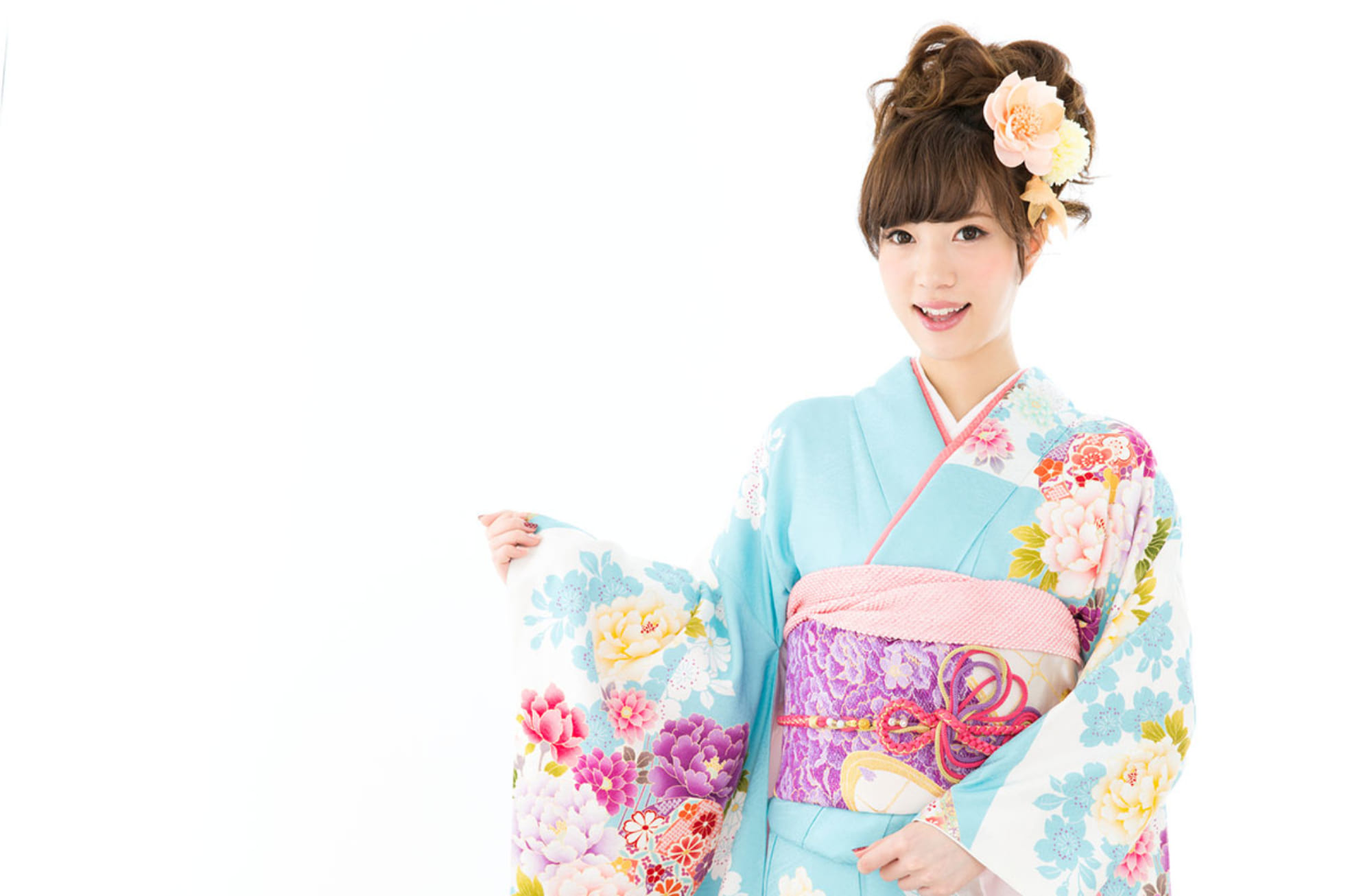Shishuu obi ( embroidered obi )
Embroidery can be traced back to embroidered Buddha images made during the Asuka and Nara periods. During the Momoyama and Edo period, embroidery became established as a way to make elaborate costumes for Noh and Kabuki performances. Various techniques are used to embroider tomesode, houmongi, “some” obi and fukuro obi with elegant patterns of plants and nature.
Besides the basic embroidery methods such as oshitagoshirae-nui and osae-nui, there are 40 different traditional embroidery techniques such as waritsuke moyo-nui, where different stitches are used to make patterns and komatori-nui, a couching stitch. There are 100~200 different techniques including decorative stitching.
Nuihaku is a technique that came about during the Momoyama period. Embroidery and impressed gold and silver are used to add luster and create a vibrant surface, and it was used during the Edo period to add designs on kosode. Bright-colored watashi-nui patterns with large stitches showing the embroidery threads were the standard during the Momoyama period, but changed later to smaller, tighter patterns.
[quote style=”boxed”]In Japanese
刺繍帯
繍仏という仏の姿を表現するのに使われた飛鳥・奈良時代をはじめ、能の装束や歌舞伎の衣裳にも絢爛豪華さを表す技術として桃山時代や江戸時代に定着したといわれます。留袖や訪問着、染め帯や袋帯にも様々な技法で主に草花や自然が色彩豊かに表され、豪華で格調高い立体的な模様になります。
縫いの技法には基本的な直線で面を埋めていく下ごしらえぬい、押えぬい、線ぬいなどのほかに、絞り染めの疋田絞りに似せた疋田掛けや麻の葉の模様の麻の葉掛けなど割り付け模様ぬい、駒に糸を引いて別の細い糸でとじていく駒取りぬいなど伝統的には四十種類もの技法があります。また変わりぬいなどを合わせると百、二百種類の技法になります。
繍箔は、応仁の乱後の桃山時代にみられる技法で、刺繍と金箔銀箔、撚らない絹糸と摺泊で量感や光沢をきわだたせたもので、後には江戸期の縫箔小袖の生地によくみられる文様表現の技法でした。桃山時代には色糸の大胆な色使いと刺繍糸を表だけにたっぷりと浮かせた渡し繍いという表現を特徴とし、その後、刺繍糸を強く引き締めて小文様で次第に裏に出る糸が多くなって緊張感ある細かな表現と変わっていきました。
[/quote]
